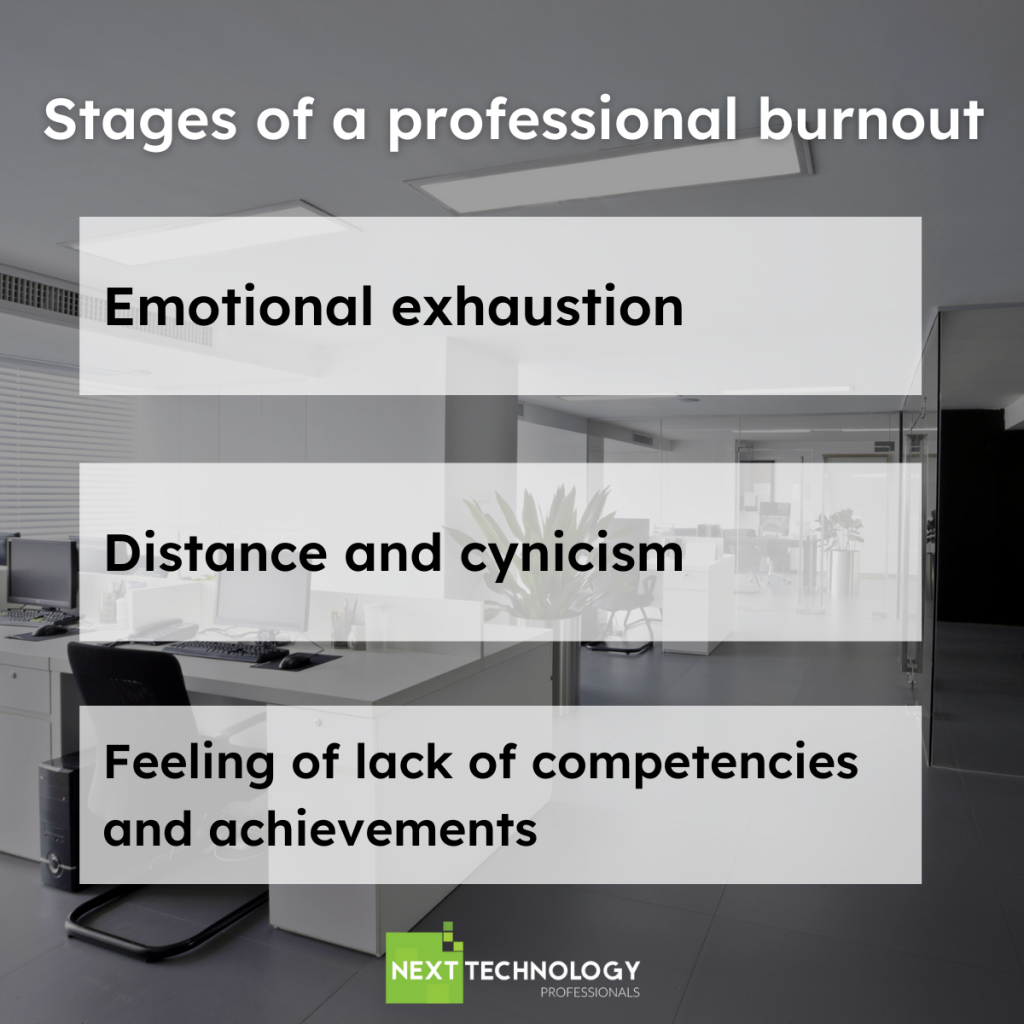Since the beginning of this year, burnout is recognized as a disease entity on the basis of the WHO International Classification of Diseases. For employers, this means that along with a change in classification, doctors may therefore issue sick leave for employees. It is worth paying special attention to the phenomenon of occupational burnout also for other reasons. It is an increasingly common disorder that, as it turns out, affects not only professionals but also young people without extensive professional experience.
The coronavirus pandemic has only made matters worse, negatively affecting the mental well-being of many workers. As research shows, 2020 was the most stressful year for many of us in our entire professional life, which is why it is so important now to take care of employees.
Many factors influence the occurrence of occupational burnout. Working conditions, the atmosphere in the office, rules in the company regarding working time, its organization and the requirements of superiors are very important here.
What is burnout, how does it manifest itself and how can we prevent it?
This is what you’ll learn in this article.
What is burnout?
In short, burnout is a psychological condition, which is the body’s response to chronic stress associated with work. It should be remembered that occupational burnout is not a temporary phenomenon manifested by work fatigue, but it may persist for several months or even years.
According to researchers dealing with the topic of burnout, stress, exhaustion and overload of the body are the dominant factors here. Most often it consists of several phases with different dynamics. Although burnout does not always go the same way. The steps can appear in a different order, intertwine with each other, or occur simultaneously.
What are the stages of a professional burnout?

Emotional exhaustion
In the first stage of professional burnout, we lose enthusiasm and joy of work in favor of increasing fatigue and discouragement. It is most often the result of stressful working conditions or investing too much energy in the implementation of tasks. Our emotional resources are depleted and replaced by pessimism, tension, mood swings, irritability and increasing frustration. Employees at this stage become more prone to conflict and accept criticism and failure more reluctantly.
Distance and cynicism
As burnout syndrome progresses, cynicism and distancing arise. The second stage, called interpersonal, is characterized by the activation of a defense mechanism by the employee, which leads to mental distancing from other people (mainly colleagues). Our relationships become superficial, formalized, and often full of malice and blame on others. This is often a surprise to team members, especially if burnout affects the originally kind and helpful employee. Unfortunately, the progressive burnout process results in increasing reluctance, weariness and exhaustion.
Feeling of lack of competencies and achievements
The longer we struggle with this disorder, the less we believe in ourselves. The undertaken professional duties require a lot of effort from us, which is accompanied by an overwhelming feeling of fatigue and apathy. The last stage of burnout affects cognitive feelings. We feel of little value, we lack the sense of agency and effectiveness. We begin to doubt our own competencies, achievements and experiences. We gradually lose our ability to deal with problems and chronic tension. We often strive for isolation. In summary – we are done with everything. We sleep worse and worse, we use stimulants, and yet we feel more and more anger and bitterness.
What’s very dangerous is that such behavior can increase, leading to permanent changes in personality traits. They contribute to many conflicts, deteriorate relationships with others, and also have a negative impact on the quality of life.
Symptoms and effects of occupational burnout
The most common symptoms of burnout include:
- constant work fatigue, lack of energy,
- decrease in involvement in professional activities,
- reduced sense of own competencies and effectiveness,
- fear of going to work,
- apathy,
- sleep disturbances,
- problems with concentration,
- lowered immunity.
Burnout has many negative effects that affect not only the person who experiences them, but also the employer.
The syndrome very often leads to conflicts in teams, a drop in productivity, more mistakes, frequent absences and even resignation from work.
Who is affected by burnout?
Burnout can affect anyone. It doesn’t matter what position you occupy or at what hierarchical level you are on. Interestingly, as recent research shows, it does not matter how long you work in the profession and what age you are. As it turns out, young people with less work experience are more likely to struggle with this problem. However, it is possible to distinguish several personality traits and work environment factors that favor the occurrence of this phenomenon.
The disorder affects more often people whose work requires contact with others, e.g. salesmen, employees of customer service departments and managers. Healthcare workers, social workers or teachers are also at greater risk. A stressful workplace is also significant, as it requires the employee to make difficult decisions quickly, can include lack of support, loneliness, conflicts. The following factors contribute to the occurrence of occupational burnout: a tendency to focus too much on work, setting unrealistic goals, a high level of perfectionism, a tendency to workaholism, and weaker mental resilience.
One of the factors influencing the number of affected workers appears to be the coronavirus pandemic and the related lockdown. According to the report “Mental wellbeing of employees in Poland“, 75% of the surveyed employees experienced burnout of varying severity in 2020. 60% of respondents admitted that they feel stressed, of which 11% feel severe stress. One in five respondents assess their mental condition as weak or very weak. As a result, in the first year of the pandemic, medical certificates caused by mental and behavioral disorders accounted for 10.8% of all days of absenteeism. The report cites ZUS data, according to which in 2020, 1.5 million medical certificates were registered for a total of 27.7 million days of sickness absence. 385,800 were certificates due to depression for a total of 7.8 million days. This is 25.3% more than in the previous year.
How to support employees in the fight against burnout?
The way of dealing with burnout depends largely on the stage of its development and the causes of its occurrence. Affected workers should not underestimate the symptoms or try to get rid of the problem on their own. If a longer rest is not enough, we should necessarily seek the help of a psychologist or psychotherapist. Especially since the symptoms of burnout can often be confused with symptoms of depression or other disorders.
As employers who care about the well-being of the employees, we should provide them with the opportunity to benefit from professional help. However, prevention is better than cure! Before you notice symptoms of burnout in yourself or your company’s employees, take care of your mental well-being, maintaining a proper balance between private and professional life, and properly planning your work so that it gives you satisfaction all the time.
- Allow yourself and your employees a moment of relaxation (also during working hours). You can organize trips and integration meetings for those who are interested in it, introduce a sports section or set clear rules of cooperation, dedicating a certain time to work and time to rest.
- Encourage employees to lead a healthy lifestyle – educate colleagues in this regard, inform them about the benefits of longer sleep, offer healthy snacks in the office and motivate them to physical activity, e.g. by conducting fitness classes during breaks at work.
- Set realistic, achievable goals in your own work and that of your employees, avoid strong pressure.
- Conduct workshops in the techniques of coping with stress and caring for internal peace and the ability to set boundaries.
- Offer your employees professional development – let them spread their wings by taking on new challenges in a nice, supportive atmosphere.
Are you looking for skilled IT specialists willing to join your company? Contact us – we pay big attention to the well-being of candidates involved in the recruitment process.




